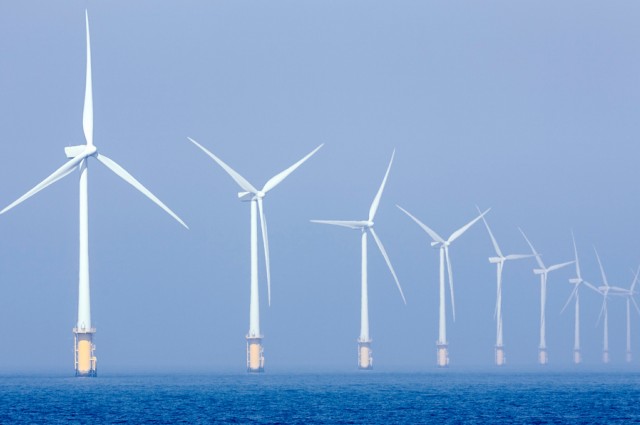Denmark has managed to set another world energy record, generating over 42 percent of its electricity in 2015 through wind turbines alone, the highest proportion for any country. This is a 3 percent rise on last year, which itself was also a record at the time. This news puts the Scandinavian nation on track for reaching its goal of supplying at least 50 percent of its energy by wind power by 2020, and highly likely to honor its commitments at the Paris climate conference.
Last year, Denmark managed to break records when it announced that it had supplied 39.1 percent of its electricity demand through wind power. Despite that being impressive enough, they’ve still managed to top it this year, with one day even meeting 140 percent of the nation’s demands. On average, they are producing surplus energy from wind power 16 percent of the time. On days like this, Denmark is even able to sell the energy to neighboring countries such as Germany, Sweden, and Norway.
“It's not unusual that we have hours where the wind production is greater than the actual consumption,” said Carsten Vittrup, an advisor to Denmark’s transmission systems operator Energinet, in a statement. “But in the western part of the country, it has sometimes been 16% more, and that illustrates that with a volatile electricity production, we are able to import and export across our borders.”
When there is not enough wind power to meet the demand, Denmark will often turn to Germany for solar and Norway for hydroelectricity, helping the country maintain its position as one of the biggest users of renewable energy in the world. When neither wind nor solar is an option, the country still has coal and biomass as a backup.
The impressive figures from 2015 are interesting in the fact that the nation has not significantly increased its capacity for wind power. In fact, two of the country’s major wind farms were out of action last year. If they were up and running, wind would have supplied Denmark with 43.5 percent of its energy requirements. The increase on last year’s figures is thought to be mainly down to a particularly windy year.
Just 10 years ago, wind energy was only accounting for 18.7 percent of Denmark’s total electricity consumption; it has now managed to more than double this. With targets of upping this to 50 percent by 2020, Denmark has even more ambitious targets of getting 90 percent of the nation’s electricity from renewables by 2030. Laudably, this is much higher than what was agreed upon at the Paris summit last year, which stipulated that countries must cut their greenhouse gas emissions by 40 percent by 2030 and increase renewables by 27 percent.
Fuente: www.iflscience.com
